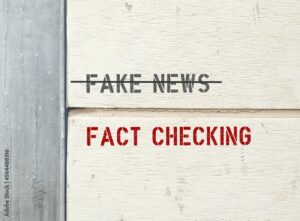Shaping Critical Thinkers: Educating for Digital Literacy in the Era of Misinformation
Teaching students about digital literacy and how to spot fake news has become increasingly important in today’s society. We rely on technology daily to keep social, find quick answers to questions, do homework, book appointments, and so much more. The younger generation is growing up with readily available technology, so it’s important to continue to educate them about digital literacy and spotting fake news before it’s too late. During class last week, we discussed many ways to approach these important topics as future educators, so I’m going to speak on a few I found quite handy.
 Since I’m studying middle years education, that is the age group I will discuss helpful resources for. We started with two activities we did during class: Spot the Troll quiz and Break the Fake. Both of these activities would be beneficial for spotting fake news among middle years students. They are age-appropriate and allow students to use their knowledge to help them decide whether it was a troll post and fake or if it was a legitimate news post and real. These activities would be great to use as opening topics to help students show how well they spot fake news before we jump into the actual content. I also think it could be cool to have students in groups make their own similar activity to quiz the class on fake news. Another resource that would be great for middle-year students is this video by John Spencer. He talks about the Five C’s of Critical Consuming and explains what each of the 5 C’s stands for. Having the students look online for articles and practice using the 5 C’s to demonstrate their knowledge would be a great activity to test their learning after completing class discussions and possible readings on spotting fake news.
Since I’m studying middle years education, that is the age group I will discuss helpful resources for. We started with two activities we did during class: Spot the Troll quiz and Break the Fake. Both of these activities would be beneficial for spotting fake news among middle years students. They are age-appropriate and allow students to use their knowledge to help them decide whether it was a troll post and fake or if it was a legitimate news post and real. These activities would be great to use as opening topics to help students show how well they spot fake news before we jump into the actual content. I also think it could be cool to have students in groups make their own similar activity to quiz the class on fake news. Another resource that would be great for middle-year students is this video by John Spencer. He talks about the Five C’s of Critical Consuming and explains what each of the 5 C’s stands for. Having the students look online for articles and practice using the 5 C’s to demonstrate their knowledge would be a great activity to test their learning after completing class discussions and possible readings on spotting fake news.
Overall, as a future educator, it is one of my responsibilities to provide students with helpful information to allow them to accurately detect fake news and remind them not to spread fake news. Being a consumer in this society is inevitable, and it is important to ensure we not only consume but also create content that does not harm others. Sharing fake news not only continues the chain of people it spreads to but can also lead websites to spread fake news and continue to create inaccurate content for internet consumers to share.